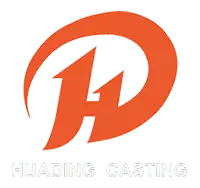
- English
- Afrikaans
- беларускі
- Hrvatski
- Bosanski
- Монгол хэл
- IsiXhosa
- Zulu
- Hawaiian
- Lëtzebuergesch
- Español
- Português
- русский
- Français
- 日本語
- Deutsch
- tiếng Việt
- Italiano
- Nederlands
- ภาษาไทย
- Polski
- 한국어
- Svenska
- magyar
- Malay
- বাংলা ভাষার
- Dansk
- Suomi
- हिन्दी
- Pilipino
- Türkçe
- Gaeilge
- العربية
- Indonesia
- Norsk
- تمل
- český
- ελληνικά
- український
- فارسی
- नेपाली
- български
- ລາວ
- Latine
- Қазақша
- Euskal
- Eesti Keel
- Română
- Slovenski
- Srpski језик
What are the characteristics of edge press pouring system? What types of castings are applicable?
2025-05-21
The characteristics of edge press pouring system: The edge press pouring system is a commonly used process for metal casting (especially small and medium-sized castings), and its design features and application scenarios are as follows: 1 Simplified design with structural features and convenient settings: consisting only of edge gating and gap gating, without the need for complex diversion systems or multiple internal gating, reducing mold production costs. Wide applicability: Suitable for single piece or small batch production, such as simple geometric castings of shaft sleeves, gears, etc., especially suitable for manual molding or small-scale casting workshops.
2. Advantages of filling process flow rate control: The edge gate restricts the flow rate of the metal liquid through a narrow channel, achieving smooth filling from bottom to top, reducing turbulence and gas entrapment. Oxidation and slag reduction: Slow filling reduces metal liquid oxidation, such as in aluminum alloy casting, which can significantly reduce surface oxide scale defects.
3. Solidification control and replenishment effect sequence solidification mechanism: The metal liquid gradually rises from the bottom, forming a temperature gradient from bottom to top, promoting bottom solidification first and top solidification later, which is conducive to replenishment. Shrinkage suppression: When used in conjunction with top risers, it can effectively compensate for the volume shrinkage of high shrinkage alloys such as cast steel and ductile iron, reducing internal shrinkage porosity.
4. Applicable materials and limitations: The edge press casting pouring system is suitable for the following types of castings: medium and small thick walled cast iron parts: the metal liquid enters the mold cavity through the edge press narrow gap, filling is slow, and has a certain shrinkage and slag blocking effect, which can meet the shrinkage needs of thick walled castings during the solidification process and reduce the occurrence of defects such as shrinkage holes and porosity. Castings prone to shrinkage: This pouring system can place high-temperature metal in the upper layer, forming a reasonable temperature field, which is conducive to achieving sequential solidification and has a good shrinkage effect on castings prone to shrinkage, effectively improving the density of castings. Simple castings: For castings with simple structures, the edge press pouring system can evenly introduce the molten metal into the mold cavity, ensuring the filling effect. In addition, some special forms of edge pressed sprues are also suitable for specific types of castings, such as the transverse runner full edge pressed sprue, which is suitable for thin-walled plates, wheels with thin wheel rims, and not too high box castings; Desktop edge pressing sprue is suitable for medium and large castings that require reinforcement and shrinkage.
5. Process sensitivity and key parameter design of gate size: The thickness of the edge pressing gate is usually 0.4-0.6 times the wall thickness of the casting, and it needs to be optimized through simulation or experimentation to avoid premature solidification or excessive flow rate. Temperature and time balance: It is necessary to coordinate the pouring temperature and filling time to prevent insufficient fluidity caused by low metal liquid temperature.
6. Auxiliary measures and coordinated process riser design: A visible or hidden riser is set at the top to store high-temperature metal liquid to supplement shrinkage, such as adding a riser at the gear hub. Exhaust optimization: Open exhaust holes at the top of the cavity or use breathable sand cores to avoid porosity defects.
7. Typical defects and solutions: Overheating in the sprue area may cause shrinkage or coarse grains, which can be solved by local cooling (such as cold iron) or adjusting the sprue position. Insufficient filling: Optimize gate size or increase pouring temperature to enhance fluidity.
Summary: The edge press pouring system has the core advantages of simple structure and efficient filling and shrinking, and is suitable for castings of specific materials and structures. However, it is sensitive to process parameters and needs to be optimized through simulation technology and experience. When selecting casting processes, it is necessary to comprehensively consider the complexity of castings, production batch size, and cost-effectiveness.



